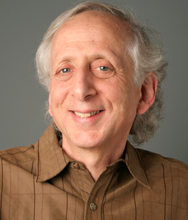The Science of Science Communication: Carnegie Mellon Researchers Publish Recommendations To Improve Scientific Decision-Making and Policy Issues
In a Special Issue of PNAS, Baruch Fischhoff, Julie Downs and Alex Davis Outline Need For Better Science Communication, How To Communicate Scientific Uncertainty and How to Use Narratives To Communicate Science Effectively; Gabrielle Wong-Parodi Discusse
Contact: Shilo Rea / 412-268-6094 / shilo@cmu.edu
 PITTSBURGH—The public dialogue surrounding whether to vaccinate children is one example of how poor communication of science can cause confusion and worsen people's health and lives. Many other issues — from climate change to nuclear power to using "smart" electricity grids — also require accurate, understandable scientific communication so that policymakers and the general public can make informed decisions.
PITTSBURGH—The public dialogue surrounding whether to vaccinate children is one example of how poor communication of science can cause confusion and worsen people's health and lives. Many other issues — from climate change to nuclear power to using "smart" electricity grids — also require accurate, understandable scientific communication so that policymakers and the general public can make informed decisions.
To mobilize best practices and stimulate research in "the science of science communication," the National Academy of Sciences has held two interdisciplinary Sackler Colloquia on the topic. Both were co-organized by Carnegie Mellon University's Baruch Fischhoff, a leader in bringing together the social, behavioral and decision sciences into this emerging area.
The Proceedings of the National Academy of Sciences (PNAS) has published two special issues on the events. The second was published online Sept.15, with papers based on the September 2013 meeting that attracted nearly 500 scientists and communicators with more than 10,000 viewers watching the live webcast. Fischhoff co-wrote the issue's introduction and, along with CMU's Alex Davis, wrote a paper on "Communicating Scientific Uncertainty." CMU's Julie Downs authored a paper on "Prescriptive Scientific Narratives for Communicating Usable Science." Gabrielle Wong-Parodi, from the Department of Engineering and Public Policy, along with Ben Strauss, from Climate Central, contributed a paper entitled "Team Science for Science Communication."
"Better communication to the public and policymakers can help scientists send clearer signals regarding accomplishments, promises and uncertainties of their work. Better communication from the public and policymakers can provide scientists with clearer signals regarding the public's concern and science's role in addressing them," said Fischhoff, the Howard Heinz University Professor of Social and Decision Sciences and Engineering and Public Policy. "The result would be a more productive dialogue about the science and the political, social and moral implications of its application."
In their paper, Fischhoff and Davis, a research scientist in engineering and public policy who received his Ph.D. from CMU in social and decision sciences, outline the challenges of explaining the uncertainty that is part of all scientific research findings. They argue that communications must address the decisions that people face. Are they looking for a signal, such as whether to evacuate before a hurricane? Are they choosing among fixed options, such as which medical treatment is best? Or, are they learning how things work, so that they can create options, such as how to regulate nanotechnology?
Fischhoff and Davis offer a communication protocol that entails identifying the facts relevant to the recipients' decisions, characterizing the relevant uncertainties, assessing their magnitude, drafting possible messages and evaluating their success.
Downs, associate researcher in social and decision sciences, describes how a narrative approach to science communication may help audiences more fully understand how science is relevant to their lives. She argues that scientific narratives can help people to reconsider long-held beliefs in the face of new findings.
Downs offers a case study from her own research, conducted in collaboration with Fischhoff and others, on how interactive media communications can improve adolescent health by helping teens make better decisions. Wong-Parodi and Strauss discuss how they collaborated in applying behavioral and decision science to improving and evaluating Climate Central's Surging Seas website (http://sealevel.climatecentral.org/).
For more information on the NAS conferences on the science of science communication, visit http://www.nasonline.org/programs/sackler-colloquia/completed_colloquia/agenda-science-communication.html and http://www.nasonline.org/programs/sackler-colloquia/completed_colloquia/agenda-science-communication-II.html.
###
Baruch Fischhoff (pictured above) is head of the decision sciences major at CMU and a leader in bringing together the social, behavioral and decision sciences into the emerging area of the science of science communication.